Quick Summary
Interior design framing is a crucial element that transforms both artwork and living spaces. The right frame can enhance room aesthetics, create visual hierarchy, and reflect personal style while providing essential artwork protection. Key considerations include:
- Style compatibility: Match frames to your room’s design theme (traditional, contemporary, minimalist)
- Colour coordination: Use frames that complement or contrast with your existing palette
- Material selection: Choose from wood, metal, or acrylic based on room function and aesthetics
- Proportional balance: Scale frames appropriately to artwork size and room dimensions
- Room-specific needs: Different spaces require different framing approaches for optimal impact
Professional framing investment ensures quality, longevity, and seamless integration with your interior design vision.
Table of Contents
- Why Interior Framing is Essential to Room Design
- The Psychology of Framing in Interior Spaces
- Complementing Your Room’s Style
- How Colour Impacts Framing Decisions
- Visual Hierarchy and Focal Points
- Creating Balance and Proportion
- Material Selection Guide
- Lighting and Frame Interaction
- Adding Meaning Through Framing
- Personal Expression in Framing
- Latest Trends in Art Framing
- Room-Specific Framing Guide
- Frequently Asked Questions
Interior design framing is often considered as crucial as the artwork itself, making it a fundamental decision that significantly impacts the overall aesthetic appeal of any room. Professional framing and decoration experts understand that the right frame choice can enhance and harmonise an artwork with its surroundings. In contrast, poor interior framing selections may detract from both the beauty and impact of the piece. Understanding various art framing styles and how framing and decoration work together is essential for creating stunning interior spaces that reflect personal style while maintaining visual coherence throughout your home design.
Proper framing not only enhances aesthetic appeal but also provides crucial protection for artwork, extending its lifespan and preserving its value over time.
Why Should You Consider Interior Framing as Essential to Room Design?
The choice of interior design framing serves as more than just a protective border for artwork. It acts as a crucial design element that bridges the gap between your painting and the room’s overall aesthetic. When selecting frames, homeowners must consider how the framing and decorative elements will complement the existing design themes, whether traditional, contemporary, minimalist, or eclectic styles.

Interior designers emphasise that framing decisions should be made with the same careful consideration as choosing furniture or paint colours, as they significantly impact the room’s overall cohesion. For comprehensive guidance on achieving this balance, explore our detailed guide on balancing paintings with interior design.
The Psychology of Framing in Interior Spaces
Research from the Journal of Environmental Psychology shows that well-framed artwork can influence mood, productivity, and overall well-being in living spaces. The psychological impact of framing extends beyond mere aesthetics to affect how occupants perceive and interact with their environment.
Understanding this psychological dimension is crucial when creating spaces that promote specific moods or atmospheres. The integration of art inspired by nature with appropriate framing can particularly enhance well-being and create calming environments.
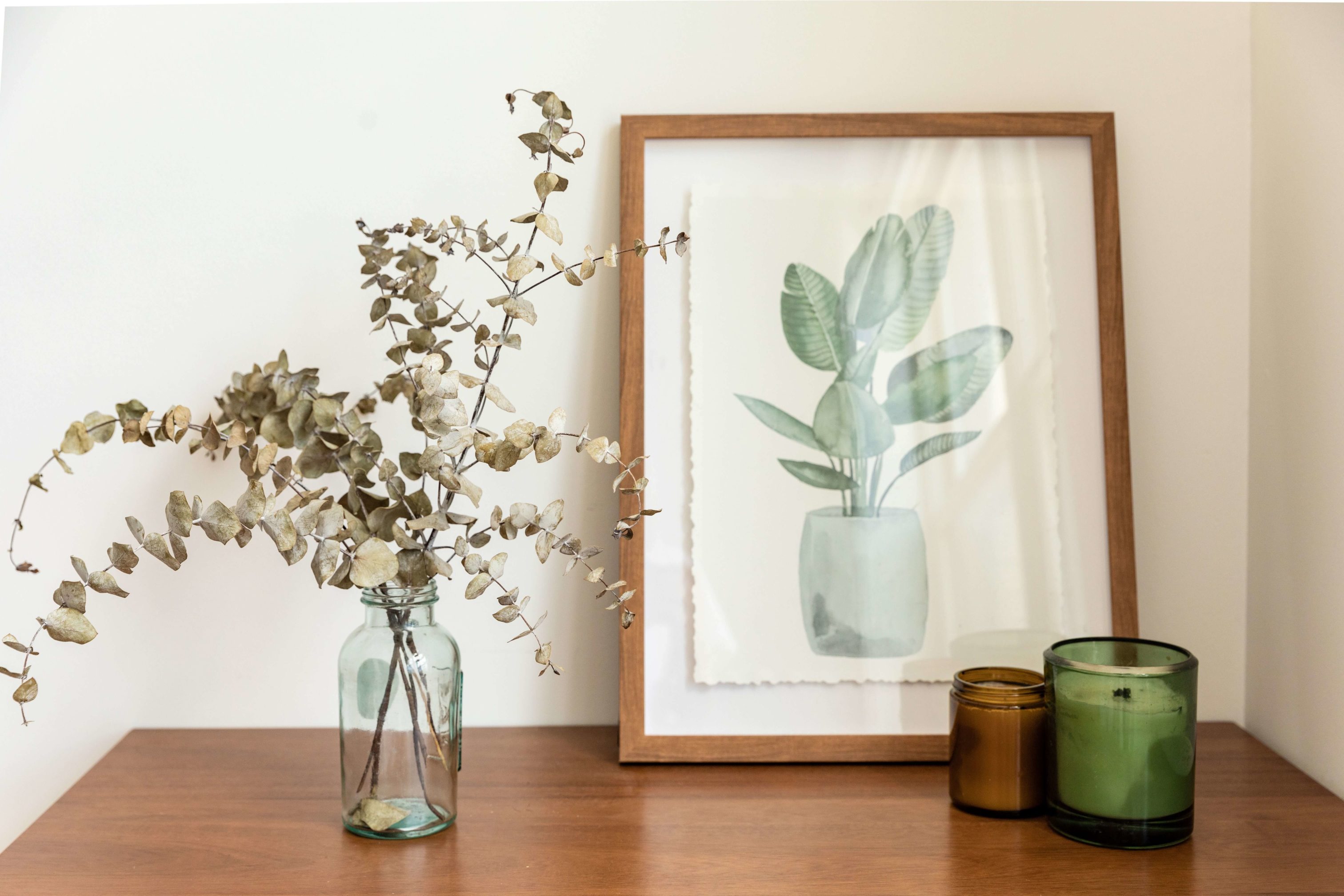
Complementing Your Room’s Style Through Art Framing Styles
One of the primary ways interior framing impacts overall room aesthetics is through style complementarity. The frame should harmonise with the room’s decor, and understanding different art framing styles helps achieve this harmony. A gilded and ornate frame might suit a classic and opulent interior, while sleek, simple frames work better in modern, minimalist settings. Interior design framing acts as a bridge between artwork and room design, ensuring seamless style integration.
Traditional and Classical Framing Styles
Traditional framing often features:
- Ornate carved details with gold or silver leaf finishes
- Wide moulding profiles that create substantial visual weight
- Classic proportions following golden ratio principles
- Natural wood finishes like mahogany, walnut, or cherry
For example, if you’re leaning toward a vintage or regal vibe, antique frames can be a perfect choice. For detailed guidance on this timeless approach, explore our comprehensive guide on antique picture framing dos and don’ts.
For a more detailed breakdown, the Victoria and Albert Museum provides extensive documentation on the evolution of frame styles throughout history, showing how traditional framing techniques have influenced modern design principles.
Contemporary and Modern Framing Approaches
Modern framing emphasises:
- Clean lines and minimal ornamentation
- Industrial materials like steel, aluminium, and acrylic
- Float mounting techniques that create shadow gaps
- Neutral colour palettes that don’t compete with artwork
According to design experts at Decorilla, the key to incorporating art into interiors lies in choosing frames that both complement your style and enhance the overall ambience of the space.
For more inspiration on harmonising artwork with room design, explore our guide on Creating Harmony: Tips for Artwork and Furniture Pairing. For those exploring current design movements, our guide on trends for interior decor 2025 offers valuable insights into emerging framing and decoration approaches.
How Does Colour Impact Framing and Decoration Decisions?
Colour plays a crucial role in how frames influence both the artwork and the surrounding interior design. Choosing a frame isn’t just about aesthetics – it’s also about creating the right emotional and visual balance in a space.
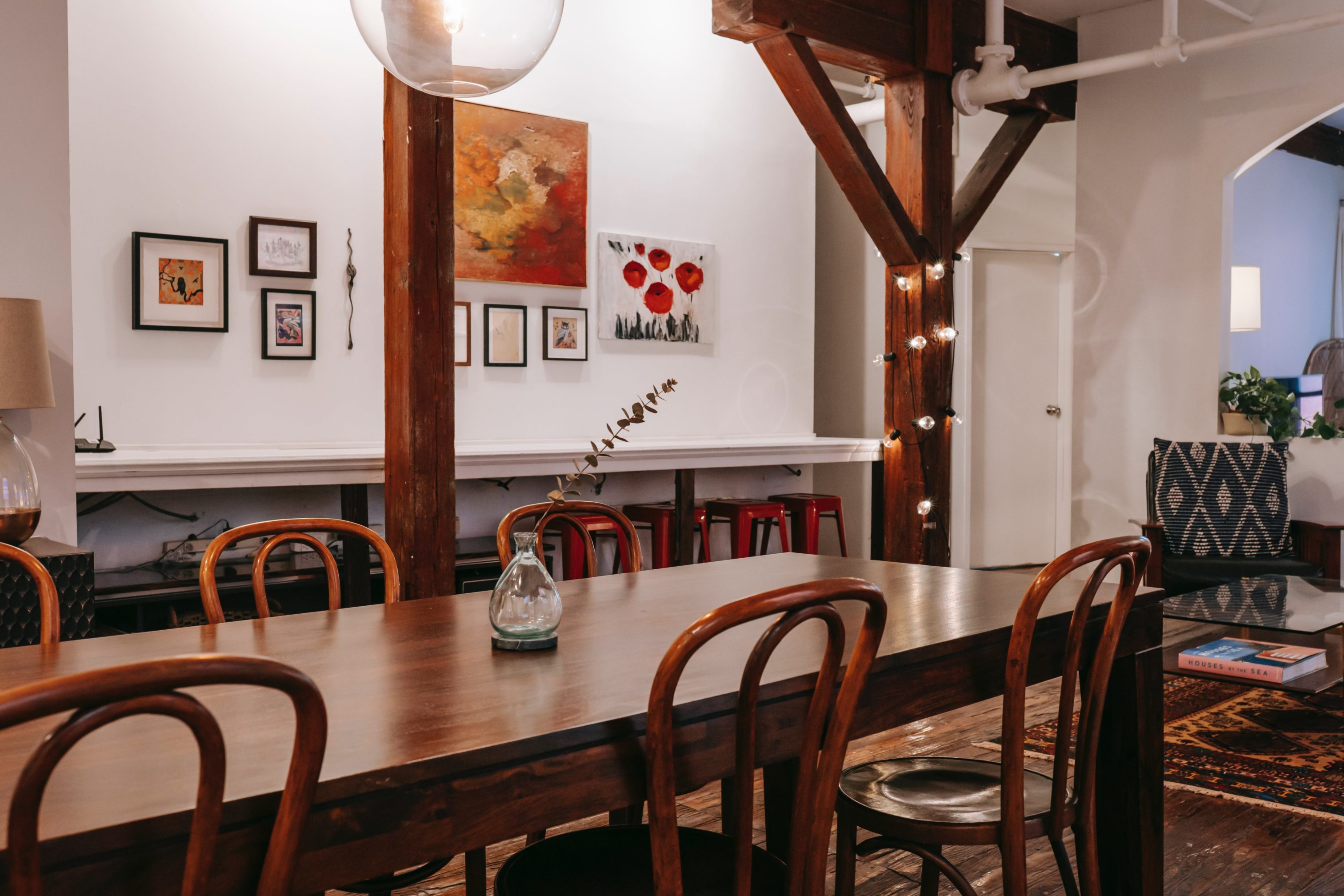
The Science of Colour in Framing
According to colour theory research published by the International Association of Colour, frames that match or subtly complement dominant room colours tend to create a sense of unity, while contrasting frame colours can make the artwork stand out as a focal point. However, if not thoughtfully chosen, clashing colours may disrupt the overall harmony of the room.
Colour Psychology in Frame Selection
This is where colour psychology comes in. Warm tones (reds, golds, oranges) in frames can bring energy and warmth to a space, making them ideal for social areas like living or dining rooms. On the other hand, cool tones (blues, greys, silvers) evoke calmness and sophistication, often suiting bedrooms, studies, or minimalist interiors.
The Colour Marketing Group provides annual forecasts on colour trends that can inform framing decisions, ensuring your choices remain current and appealing.
Advanced Colour Matching Techniques
Professional designers use several colour-matching strategies:
- Monochromatic schemes: Using various shades of the same colour family
- Analogous combinations: Selecting colours adjacent on the colour wheel
- Complementary contrasts: Pairing colours opposite on the colour wheel
- Triadic harmonies: Using three evenly spaced colours
Interior design framing experts also recommend aligning framing choices with room colour schemes – whether monochromatic, complementary, or contrasting. This ensures that frames don’t just house the artwork but actively contribute to the room’s mood and balance.
For a deeper dive, explore our blogs on Colour Psychology in Interior Design and Room Colour Schemes for Modern Interiors, which expand on how colour choices can transform the look and feel of your space.
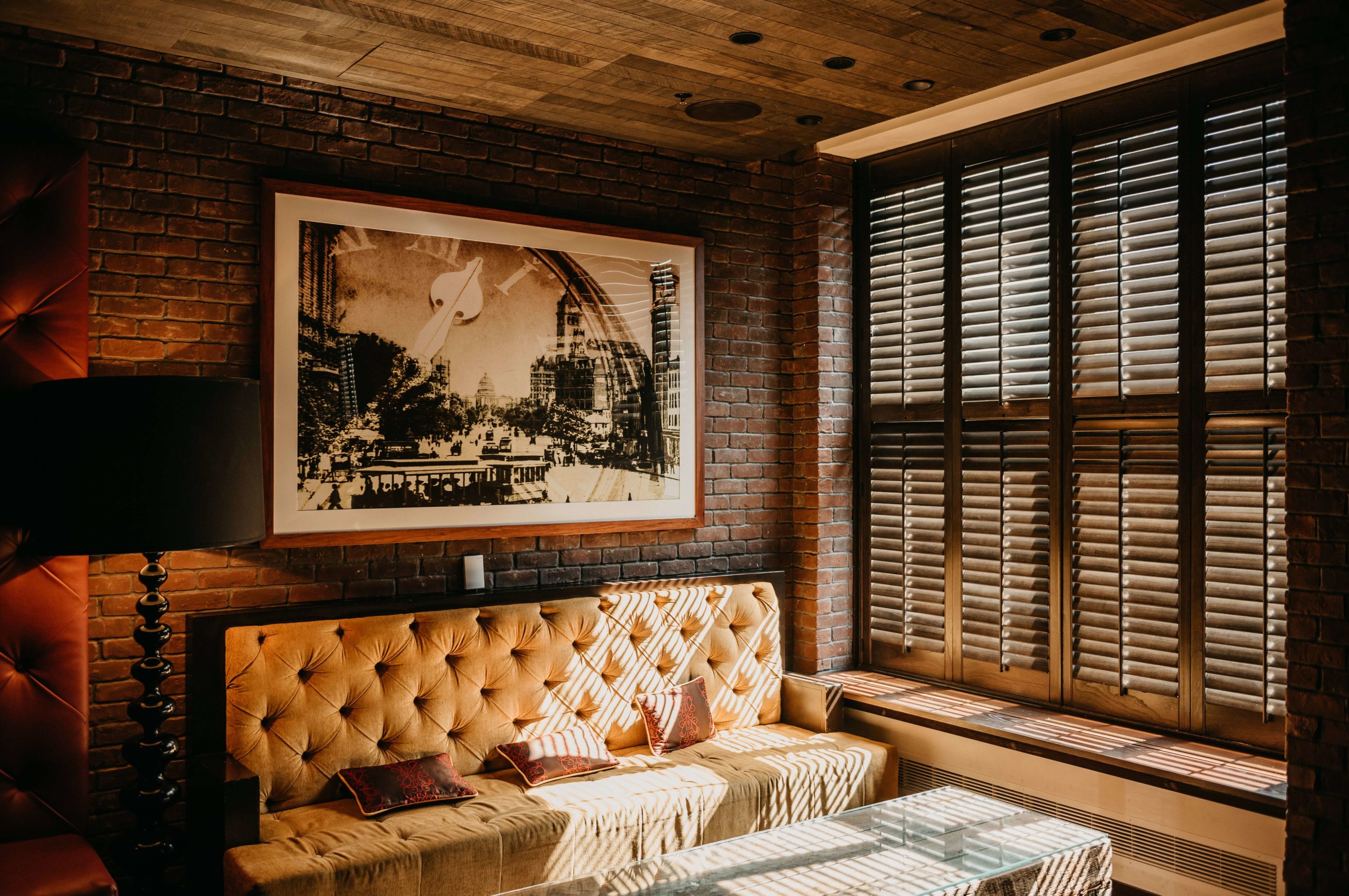
What Role Do Art Framing Styles Play in Visual Hierarchy?
Interior framing plays a vital role in establishing visual hierarchy within rooms. Frames act as borders, drawing attention to the enclosed artwork. The size, shape, and style of interior design framing can influence how prominently paintings are featured within room designs.
Understanding Visual Weight in Framing
Visual weight in framing is determined by several factors:
- Frame width and profile depth
- Colour intensity and contrast
- Texture and finish quality
- Proportional relationship to artwork
The Smithsonian Institution’s design guidelines explain how proper visual hierarchy guides viewer attention and creates engaging exhibition spaces, principles that apply equally to residential interiors.
Creating Focal Points Through Strategic Framing
Larger, more elaborate art framing styles may draw the eye more effectively, making paintings the central focal points. Smaller, subtler interior framing options may encourage a more understated presence. This strategic use of framing allows designers to control the viewer’s journey through the space.
Professional interior designers often utilise framing and decoration techniques to control painting prominence within room design schemes. For detailed guidance on creating focal points, check out our article on Large-Scale Paintings as Focal Points in Interior Design.
How Can Interior Design Framing Create Balance and Proportion?
Achieving balance and proportion in interior design is crucial for creating harmonious environments. Framing and decoration can be powerful tools for achieving this balance. Well-proportioned interior framing provides equilibrium by complementing painting sizes and scales alongside other design elements.
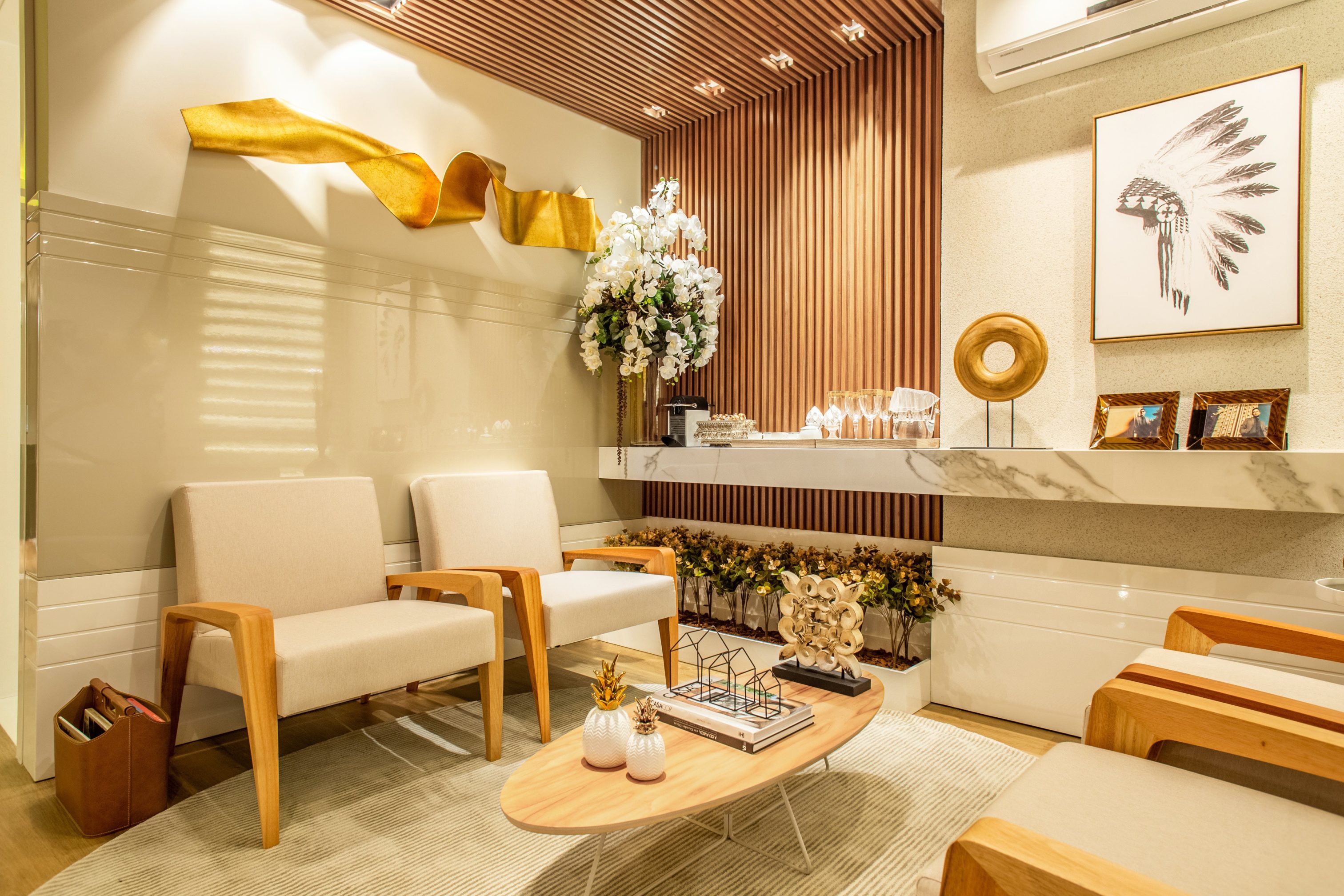
The Mathematics of Proportion in Framing
The golden ratio (1:1.618) has been used in art and architecture for centuries. The Metropolitan Museum of Art documents how this mathematical principle appears throughout art history and continues to influence contemporary framing decisions.
Proportional Guidelines for Different Spaces
For instance, large paintings in small rooms may benefit from thinner art framing styles to avoid overwhelming spaces, while spacious rooms with smaller artworks could benefit from wider interior design framing to fill visual voids. Understanding these framing and decoration principles helps create balanced, proportionate interior spaces.
Room Size Considerations:
- Small rooms (under 200 sq ft): Use frames no wider than 2-3 inches
- Medium rooms (200-400 sq ft): Frame widths of 3-5 inches work well
- Large rooms (over 400 sq ft): Can accommodate frames 5+ inches wide
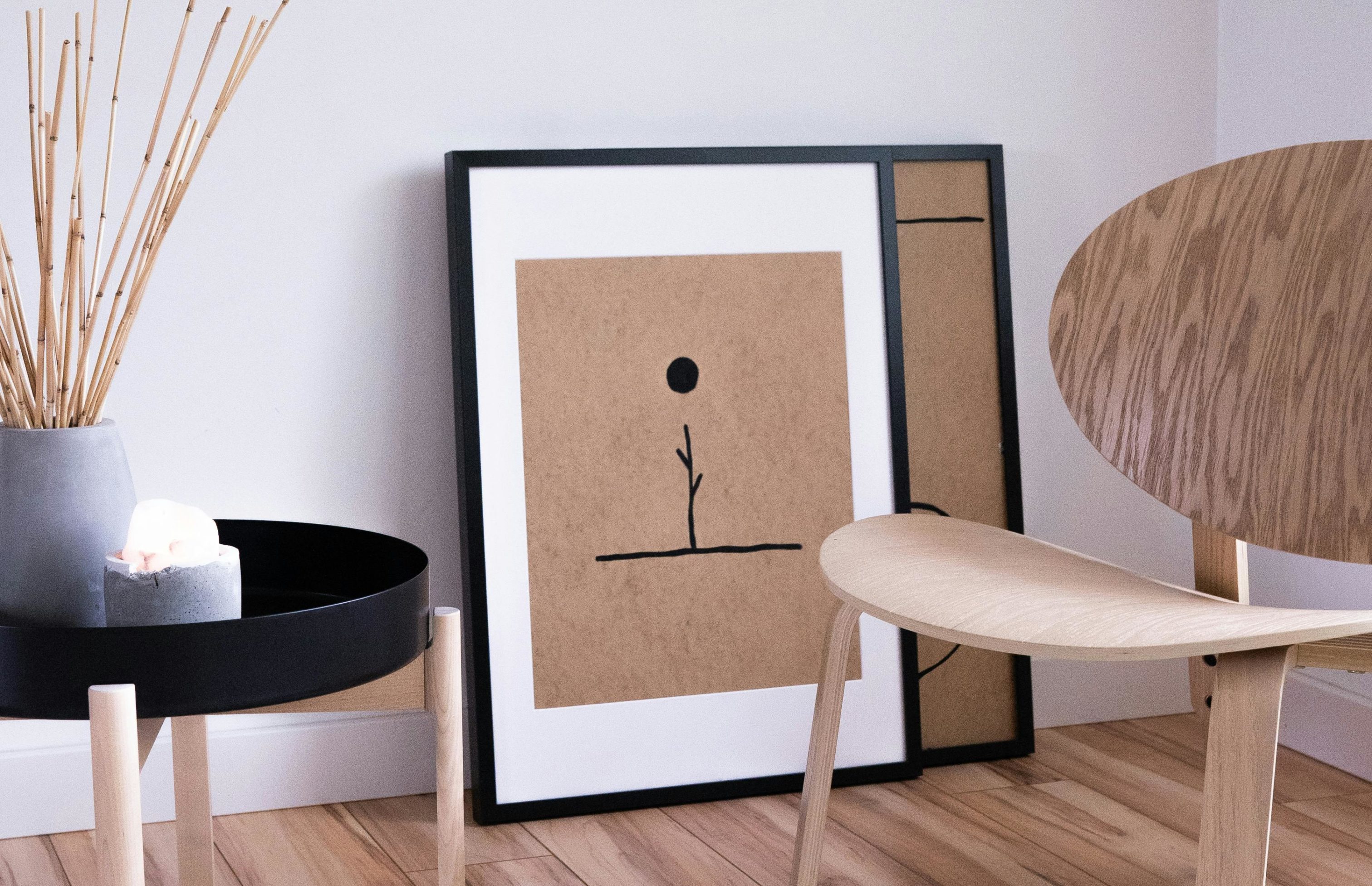
What Materials Should You Consider for Interior Framing?
Interior design framing extends beyond style and aesthetics to include texture and material diversity in room design. The choice of framing materials introduces new textures that enhance the overall space’s look and feel.
Traditional Framing Materials
Wood Framing Options:
- Hardwoods: Oak, maple, cherry, for durability and rich grain
- Softwoods: Pine, basswood for cost-effective solutions
- Exotic woods: Ebony, rosewood for luxury applications
Wooden interior framing can bring warmth and natural elements to rooms, creating connections to nature that research from Environmental Psychology journals shows can reduce stress and improve well-being. This aligns with themes we explored in our Art Inspired by Nature blog – showing how surrounding ourselves with organic elements fosters a calming, connected environment.
Contemporary Material Innovations
Metal Framing Advantages:
- Aluminium: Lightweight, corrosion-resistant, modern appearance
- Steel: Industrial strength, sleek profiles, contemporary appeal
- Brass: Warm metallic finish, vintage character
Metallic art framing styles may lend contemporary and industrial feels to spaces. The Industrial Designers Society of America provides insights into how industrial materials are being incorporated into residential design.
Acrylic and Composite Options:
- Clear acrylic: Creates floating effects, modern appeal
- Colored acrylics: Bold statements, youth-oriented designs
- Composite materials: Environmentally sustainable options
Leading framing and decoration experts at Tribeca Printworks emphasise the importance of material selection in creating cohesive interior design schemes.
Sustainable Framing Materials
With increasing environmental awareness, sustainable framing options are gaining popularity:
- Reclaimed wood: Reduces environmental impact, adds character
- Recycled metals: Eco-friendly manufacturing processes
- Bamboo composites: Rapidly renewable resource, modern appearance
The Forest Stewardship Council provides certification for sustainably sourced wood products, helping consumers make environmentally responsible choices.
This material diversity in framing and decoration adds depth and character to room designs, making interior framing choices critical for overall aesthetic success. For more insights into eco-conscious artistic practices, explore our comprehensive guide on sustainability in art.
How Does Lighting Interact with Art Framing Styles?
Interior design framing can influence how light interacts with paintings and rooms as a whole. Understanding this relationship is crucial for creating optimal viewing conditions and enhancing overall ambience.

Reflective Properties of Different Frame Materials
Reflective frames, such as those made of glass or acrylic, can bounce light around rooms, creating a sense of airiness and spaciousness. Conversely, matte or darker interior framing may absorb light, creating more intimate and cosy atmospheres.
The International Association of Lighting Designers provides guidelines for properly lighting framed artwork to minimise glare while maximising visual impact.
LED Integration and Smart Lighting
Modern framing increasingly incorporates LED lighting systems:
- Picture lights: Focused illumination for individual pieces
- Integrated strips: Built into frame profiles for seamless appearance
- Smart controls: Adjustable colour temperature and intensity
UV Protection Considerations
Professional-grade framing includes UV-filtering glazing to protect artwork:
- Museum glass: 99% UV filtration, minimal reflection
- Conservation glass: 97% UV protection, cost-effective
- Acrylic alternatives: Lightweight, shatter-resistant options
For more in-depth tips, check out our guide to lighting artwork effectively.
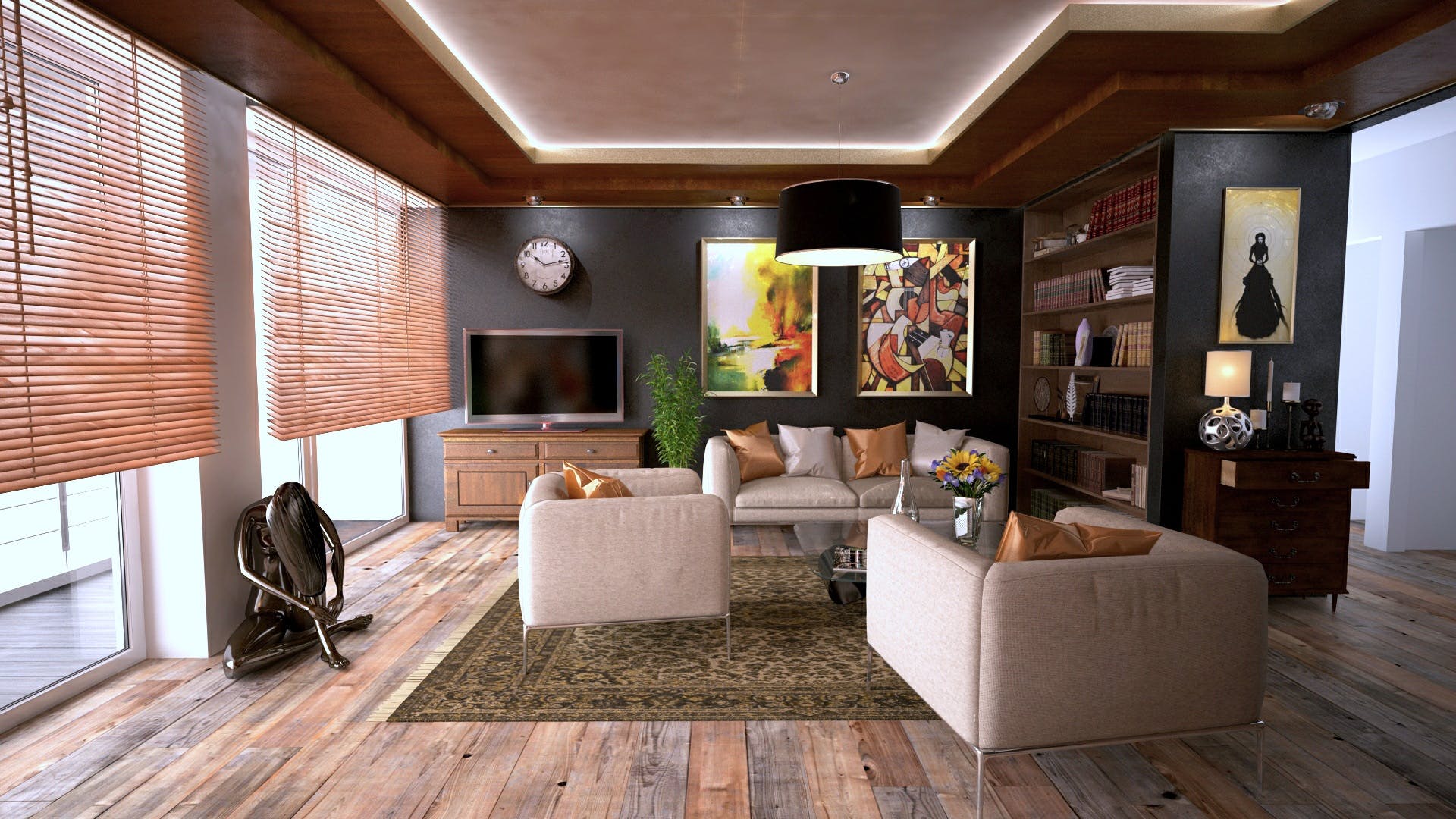
How Can Framing and Decoration Add Meaning to Art?
In some cases, interior framing itself can be a meaningful addition to artwork. Art framing styles can tell stories or convey deeper messages, adding layers of interpretation and personal significance.
Historical and Cultural Context in Framing
For example, distressed or weathered interior design framing can add a sense of history and nostalgia to paintings, making them particularly suitable for vintage or retro-themed rooms. The National Gallery of Art documents how frame styles reflect the cultural and artistic movements of their time periods.
Custom Framing for Personal Narrative
Custom-made framing and decoration that incorporate elements related to the painting’s subject matter can add layers of meaning and significance to the artwork within the room design. This approach to interior framing creates more personalised, meaningful interior spaces.
Custom Elements Might Include:
- Carved details relating to artwork themes
- Incorporated objects from travels or memories
- Family heirloom materials repurposed into frames
Cultural symbols reflecting heritage or beliefs
How Does Interior Design Framing Reflect Personal Expression?
Ultimately, framing and decoration choices should reflect individual personal taste and expression. Interior framing should resonate with the owner’s aesthetic preferences and contribute to the overall room design in unique, meaningful ways.

Developing Your Personal Framing Style
The American Society of Interior Designers suggests that successful interior design reflects the occupant’s personality while maintaining functional and aesthetic balance. This principle applies directly to framing decisions.
While guidelines and recommendations exist for art framing styles, no strict rules govern framing choices. Interior design framing presents opportunities for personal expression and creativity, allowing homeowners to showcase personality and style through thoughtful framing and decoration selections.
Personal Expression Through:
- Mix-and-match approaches combining different frame styles
- DIY customisation, adding personal touches to standard frames
- Collectable frames showcasing hobbies or interests
- Rotation systems allowing seasonal or mood-based changes
For ideas on selecting artwork that complements your interiors, explore our guide to pairing artwork and furniture. For ideas on selecting artwork that complements your personal style and interiors, explore our comprehensive guide on art framing in interior design.
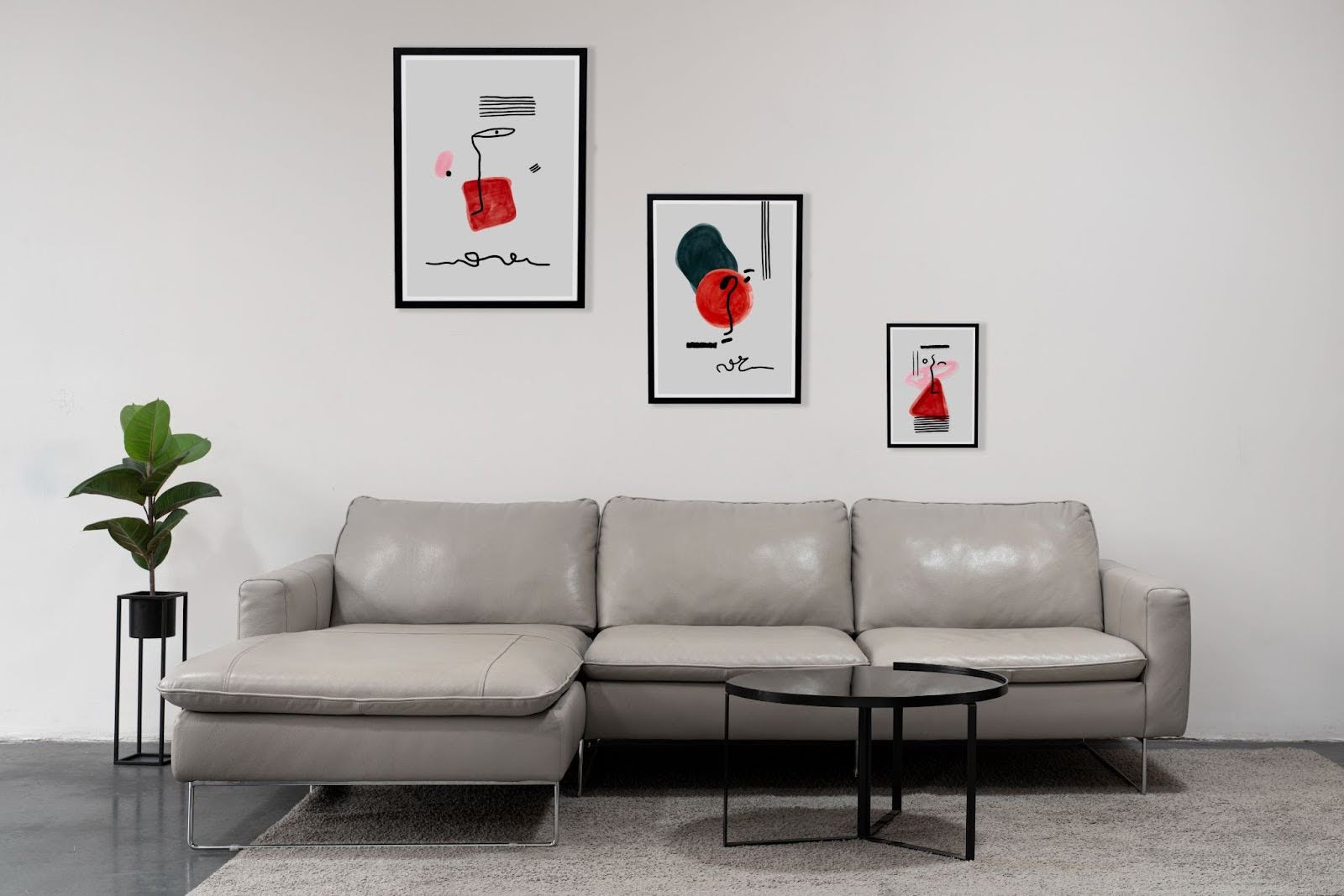
What Are the Latest Trends in Art Framing Styles?
Contemporary framing and decoration trends continue evolving, with new art framing styles emerging regularly. Modern interior design framing incorporates sustainable materials, mixed media elements, and innovative display techniques.
Current Trending Styles
2025 Framing Trends Include:
- Oversized frames create dramatic focal points
- Layered compositions mixing frame depths and sizes
- Natural textures incorporating woven materials and raw woods
- Geometric shapes moving beyond traditional rectangles
Understanding current trends helps homeowners make informed interior framing decisions that remain relevant and stylish. House Beautiful Magazine regularly features the latest trends in home décor, including framing innovations.
Technology Integration
Modern framing increasingly incorporates technology:
- Digital displays within traditional frame profiles
- Wireless charging integrated into frame stands
- App-controlled lighting for customisable illumination
- Climate monitoring protects valuable artwork
Design professionals at Homes & Gardens emphasise that incorporating art into interiors is more than decoration – it’s a powerful way to express personality and is often considered essential for a successful design scheme.
International Influences
Global design trends are influencing framing styles:
- Scandinavian minimalism: Clean lines, light woods
- Japanese wabi-sabi: Embracing imperfection and natural materials
- Mediterranean warmth: Rich textures and earth tones
- Industrial chic: Raw metals and exposed mechanics
For more insights into how different design philosophies influence framing choices, explore our analysis of minimalism and maximalism in interior design.
How Can You Choose the Right Interior Framing for Different Room Types?
Different rooms call for distinct framing and decoration approaches. What works in a living room may feel out of place in a bedroom, while kitchen spaces demand durability as much as style. Here’s a comprehensive look at how to match art framing styles to different room types:

1. Living Room Interior Framing
Purpose: The living room is often the heart of the home, where art becomes a focal point and conversation starter.
Framing Choices: Bold, oversized frames or statement gallery walls can create impact. Materials like metallic finishes (gold, silver, brass) or chunky wooden frames can complement different interior styles.
Professional Considerations:
- Frame sizes should relate to furniture scale
- Gallery walls require consistent spacing (typically 2-3 inches between frames)
- Consider viewing distances when selecting frame details
Placement Tips: Hang larger framed pieces at eye level behind sofas or above fireplaces to anchor the room. For modern interiors, mix and match frame sizes for a curated gallery look.
The American Institute of Architects provides guidelines for residential space planning that include artwork placement recommendations.
2. Bedroom Interior Design Framing
Purpose: Bedrooms benefit from art that promotes rest and tranquillity.
Framing Choices: Go for softer finishes like natural wood, fabric-covered frames, or muted tones that blend with bedding and wall colours. Thin, minimalist frames or even floating frames can help maintain a calming atmosphere.
Sleep Psychology Considerations: Research from the Sleep Foundation shows that bedroom environments significantly impact sleep quality. Frame choices should support, not detract from, restful atmospheres.
Placement Tips: Consider framing pairs or triptychs above the headboard for symmetry, or smaller framed prints on bedside walls for intimacy.
3. Kitchen Art Framing Styles
Purpose: Kitchens face unique challenges such as humidity, heat, and regular cleaning.
Framing Choices: Opt for durable, wipe-clean materials like sealed wood, acrylic, or metal. Avoid delicate or fabric-based frames.
Environmental Considerations:
- Humidity resistance: Sealed frames prevent warping
- Heat tolerance: Materials that won’t degrade near appliances
- Easy cleaning: Smooth surfaces for quick maintenance
Placement Tips: Keep framed art away from direct cooking areas. Instead, use wall space near breakfast nooks or above countertops not exposed to splatter. For more inspiration, see our Kitchen Wall Art Ideas 2025 guide.
The National Kitchen & Bath Association provides guidelines for kitchen design that include recommendations for decorative elements.
4. Dining Room Interior Framing
- Purpose: Dining rooms often lean toward formal or elegant décor, making art a central element of the ambience.
- Framing Choices: Consider classic moulded frames or frames with a subtle sheen to reflect light and add sophistication. For contemporary spaces, sleek black or metal frames can create drama.
- Placement Tips: A large framed artwork centred on the main wall can create a striking backdrop, while a series of smaller pieces arranged symmetrically can balance formality with personality.
Conclusion: Mastering Interior Design Framing for Stunning Results
Interior design framing isn’t just about borders for artwork- it shapes room style, balance, texture, and how light interacts with space. The right frame can highlight personal taste, tell a story, and elevate both paintings and interiors.
By aligning framing choices with the room’s function and design principles, homeowners can create cohesive, visually striking spaces. Whether choosing classic or contemporary styles, thoughtful framing turns any room into a refined expression of personality and artistry.
For tailored guidance, consult design professionals who can help transform your interiors through expert framing and decoration choices.
Looking for more interior design inspiration? Explore our comprehensive collection of guides on art and interior design to discover how framing and decoration can elevate your home’s aesthetic appeal – and browse our curated pieces to bring that inspiration to life.
Frequently Asked Questions (FAQs)
Framing enhances both the artwork and the room by creating harmony, balance, and visual coherence. The right frame ensures that the painting complements the overall design style.
Consider your room’s style (modern, traditional, minimalist, eclectic), colour palette, and lighting. The frame should complement – not clash with – these elements.
Sleek, simple, and minimalist frames (often in neutral tones or metals) work best in contemporary spaces, keeping the focus on clean lines and the artwork itself.
Yes. Choosing thinner, lighter frames and reflective materials like glass or acrylic can help create a sense of openness in smaller rooms.
Popular materials include wood (for warmth and natural feel), metal (for a modern look), and acrylic (for durability and sleekness). The choice depends on the room’s overall theme.
Frame colours that match or complement your room’s palette create a cohesive look, while contrasting colours can make the artwork stand out as a focal point.
Framing draws the eye to the artwork, establishing visual hierarchy. Larger, ornate frames can make paintings central features, while subtle frames create a softer presence.
Yes. Professional framers ensure high-quality finishes, proper proportions, and framing techniques that protect and highlight your artwork while blending seamlessly with your interior design.
- Living room: Bold frames for statement pieces.
- Bedroom: Subtle, calming frames to promote relaxation.
- Kitchen: Durable, moisture-resistant materials.
Sustainable materials, mixed textures, oversized frames, and custom-made designs are trending, along with styles that enhance natural light interaction.

